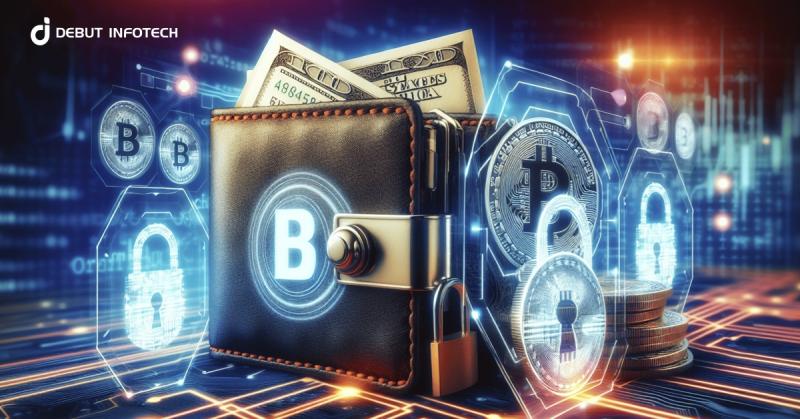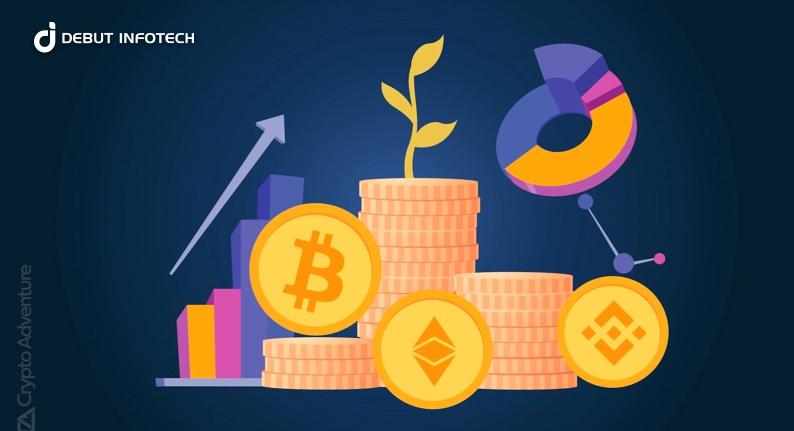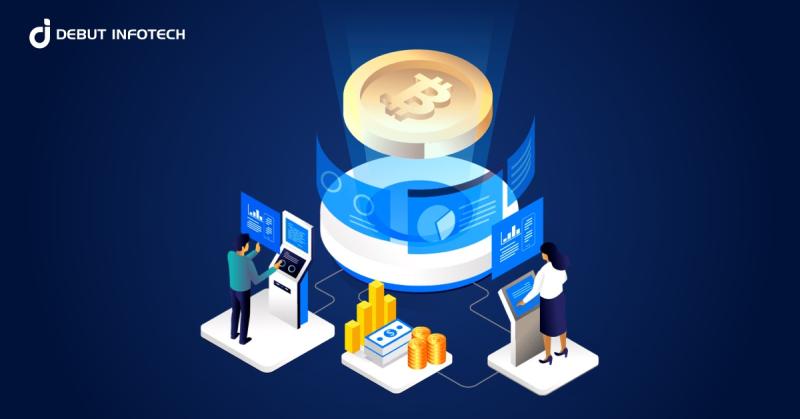Real World Asset Tokenization: An In-Depth Guide

Real world asset (RWA) tokenization has experienced significant growth in recent years. Thanks to the impact of technology, the market is valued at trillions of dollars. This surge can be attributed to the expansion of decentralized finance (DeFi) protocols and the increasing interest of financial institutions and governments in integrating traditional financial instruments into blockchain environments.
Through asset tokenization or digitization, physical assets such as real estate, artworks, treasuries, and luxury goods like watches and jewelry are transformed into digital tokens using blockchain technology. This innovative approach involves converting ownership rights to these assets into secure and tradable digital representations.
Asset tokenization enhances liquidity through fractional ownership, enabling more efficient, cost-effective trading with faster transactions. Additionally, blockchain's decentralized ledger ensures transparency and immutability, boosting trust and security among participants.
In this article, we will explore the meaning of real world asset tokenization, how it works, its infrastructure, benefits and challenges. Furthermore, we will highlight the types of real world assets and the use cases of tokenized real world assets.
What are Real World Assets or RWA in Crypto?
Real world assets (RWA) represent tangible or physical assets that traditionally exist outside the digital domain. These assets span various categories, including real estate properties, commodities, artworks, intellectual property rights, and financial instruments such as bonds and equities. In the context of cryptocurrency and blockchain technology, RWAs are being increasingly tokenized to enable their representation as digital assets on decentralized platforms.
Types of Real World Assets
Here are the different types of real world assets:
1. Real Estate
Real estate is one of the most traditional forms of real world assets, which encompasses residential, commercial, and industrial properties. It offers stability through rental income and potential appreciation in property value over time. Investors often diversify by geography and property type to mitigate risks associated with market fluctuations.
2. Infrastructure
Infrastructure assets include essential facilities and systems that support societal functioning, such as roads, bridges, airports, and utilities (water, electricity). These investments typically provide stable cash flows through long-term contracts or regulated tariffs, making them attractive for income-oriented investors seeking steady returns.
3. Commodities
Commodities are tangible goods used in commerce, such as precious metals (gold, silver), energy resources (oil, natural gas), and agricultural products (wheat, coffee). hey offer a hedge against inflation and geopolitical uncertainty, with their value influenced by global supply and demand dynamics.
4. Natural Resources
Investments in natural resources encompass assets like timberland, farmland, and mineral rights. These assets generate income through resource extraction or sustainable harvesting practices. They can provide diversification benefits due to their low correlation with traditional financial markets.
5. Collectibles
Collectibles include cultural or historical significance items, such as art, antiques, rare coins, and vintage cars. Their value often appreciates over time, driven by scarcity, demand from collectors, and cultural trends. Investing in collectibles requires expertise to assess authenticity and market trends.
6. Private Equity and Venture Capital
These assets involve investing directly in private companies or startups. Private equity focuses on established businesses seeking growth or restructuring. At the same time, venture capital targets early-stage companies with high growth potential. These investments opportunities offers significant returns but require thorough due diligence and longer investment horizons.
7. Intellectual Property
Intellectual property assets include patents, trademarks, copyrights, and trade secrets. They generate revenue through licensing agreements or royalties from products and services using proprietary technology or creative works. Intellectual property investments require legal expertise and careful valuation to assess potential risks and returns.
What is the Tokenization of Real world Assets?
Tokenization of real world assets involves converting ownership rights or physical assets into digital tokens on a blockchain. These tokens are programmable and can represent either total or fractional ownership of the underlying asset. The process allows assets that are traditionally illiquid to become more easily tradable and accessible to a broader range of investors on blockchain-based platforms.
How Does Real World Assets Tokenization Work?
Here's a step by step guide of how the process of tokenization works:
1. Asset Identification and Verification
Assets suitable for tokenization are identified and verified for ownership rights, legal status, and regulation compliance. Transparent documentation is crucial to ensure authenticity and integration into the blockchain ecosystem.
2. Legal Framework and Compliance
Tokenization of real world assets requires a robust legal framework to address regulatory requirements and investor protections. Smart contracts are structured by legal experts to govern token issuance, ownership, transferability, and compliance standards, ensuring transparency and security.
3. Selection of Blockchain Platform
Choosing the right blockchain platform is pivotal for efficiency and scalability. Factors include consensus mechanisms, security features, and smart contract capabilities. Platforms like Ethereum and Binance Smart Chain offer tailored solutions for asset tokenization.
4. Smart Contract Development
Smart contracts automate asset tokenization processes and defines rules for token creation, issuance, and transaction execution. They enable direct interaction between token holders and assets, reducing costs and enhancing operational efficiency.
5. Token Issuance and Distribution
Tokens representing asset ownership are issued and distributed according to predefined parameters such as investment amounts and governance rights. Blockchain's transparent ledger ensures a clear record of ownership and transactions, enhancing trust.
6. Trading and Liquidity
Tokenized assets improve liquidity through fractional ownership and trading on decentralized exchanges (DEXs). Automated liquidity protocols in DeFi ecosystems optimize trading opportunities and price discovery, lowering barriers to market entry.
7. Regulatory Compliance and Governance
Adherence to regulatory frameworks, including securities laws and AML regulations, is crucial. Reliable asset tokenization companies adhere to these regulations and laws. Governance structures manage voting rights and asset management responsibilities, ensuring legal compliance and investor confidence.
RWA Tokenization Infrastructure
Here is a breakdown of the RWA Tokenization Infrastructure and how it impacts asset tokenization platforms:
Blockchain Platforms: Foundation of Digital Asset Tokenization
Blockchain platforms are crucial for RWA tokenization, providing the environment for creating, issuing, and managing digital tokens. Key considerations include:
Security: Robust protocols to prevent hacking.
Scalability: Handling high transaction volumes efficiently.
Interoperability: Cross chain interoperability involves compatibility with other networks and financial systems.
Smart Contract Capabilities: Automation and enforcement of token rules.
Platforms like Ethereum, Binance Smart Chain, and Polkadot offer varied functionalities and scalability.
Smart Contracts: Automating and Securing Transactions
Smart contracts are self-executing with terms in code, vital for RWA tokenization by:
Defining Ownership Rights: Legal and financial rights of token holders.
Automating Transactions: Executing transactions automatically.
Ensuring Compliance: Embedding regulatory requirements.
Managing Distributions: This involves automating payments and financial obligations for asset tokenization companies.
Smart contracts enhance transparency, reduce costs, and ensure transaction integrity of tokenization assets.
Decentralized Finance (DeFi) Protocols: Enhancing Liquidity and Market Access
Defi protocols provide liquidity and market access for tokenized real world assets through:
Decentralized Exchanges (DEXs): Trading without intermediaries.
Liquidity Pools: Investors pool assets to provide liquidity.
Lending and Borrowing: Platforms like Aave and Compound facilitate lending and borrowing.
Staking and Yield Farming: Earning rewards through staking.
DeFi protocols democratize financial services, improving liquidity.
Digital Wallets: Secure Storage and Transaction Management
Digital wallets store and manage digital tokens securely, offering:
Security: Strong encryption and authentication.
User-Friendly Interface: Easy management and transfer of tokens.
Interoperability: Compatibility with multiple platforms and protocols.
Recovery Options: Solutions for lost credentials.
Wallets like MetaMask, Trust Wallet, and Ledger cater to various needs.
Regulatory and Compliance Frameworks: Ensuring Legal and Regulatory Adherence
Successful tokenization requires robust compliance with the following:
KYC/AML: Verifying identities and preventing illicit activities.
Securities Regulations: Protecting investors and market integrity.
Tax Compliance: Proper reporting and tax payments.
Data Privacy: Protecting personal and financial data.
Legal experts and regulators develop frameworks to ensure trustworthiness.
Custody Solutions: Safekeeping Digital Assets
Custody solutions provide secure storage for digital tokens, especially for institutional investors, including:
Cold Storage: Offline protection from cyber threats.
Multi-Signature Wallets: Enhanced security through multiple signatures.
Insurance Coverage: Protection against losses.
Regulatory Compliance: Adherence to standards for asset management.
It’s vital to review security measures employed before planning to tokenize real world assets on any platform. Providers like Coinbase Custody, BitGo, and Fidelity Digital Assets ensure safe and compliant storage.
Use Cases of Tokenized Real World Assets
Here are the diverse use cases of tokenized real world assets, categorized into fungible and non-fungible tokens (NFTs).
Fungible Tokens
Here are examples of fungible tokens:
Real Estate
Fractional Ownership: Tokenization allows investors to own fractions of high-value properties. This makes real estate investment more accessible and liquid. Instead of purchasing an entire property, investors can buy tokens representing shares in the property, lowering the entry barrier for retail investors.
Real Estate Investment Trusts (REITs): Traditional REITs can be tokenized to enhance liquidity and transparency. Tokenized REITs enable quicker transactions and more efficient management of real estate portfolios, providing investors with real time insights into property performance.
Commodities
Precious Metals: Gold, silver, and other precious metals can be tokenized to facilitate easier trading and investment. Tokens representing physical commodities enable investors to trade these assets on digital platforms, enhancing market accessibility and reducing storage and transportation costs.
Agricultural Products: Commodities like grains, coffee, and livestock can be tokenized to improve supply chain transparency and efficiency. Tokenization enables farmers and producers to raise capital directly from investors, bypassing traditional intermediaries.
Financial Instruments
Bonds and Securities: Traditional bonds and securities can be digitized into tokens, streamlining issuance, trading, and settlement processes. Tokenized bonds provide increased liquidity and accessibility for investors while reducing administrative costs and enhancing compliance.
Debt Instruments: Tokenizing debt instruments like loans and mortgages enables fractional ownership and secondary market trading, increasing liquidity for lenders and investment opportunities for individuals.
Non-Fungible Tokens (NFTs)
Here are examples of Non-Fungible Tokens:
Art and Collectibles
Digital Art Ownership: NFTs revolutionize the art world by enabling the digital representation of unique artworks. Artists can tokenize their creations, providing proof of ownership and authenticity while allowing fractional ownership and trading of high-value pieces.
Collectibles: Physical collectibles, such as rare stamps, coins, and memorabilia, can be tokenized to create digital representations. This enhances liquidity and allows collectors to trade, buy, and sell items in a secure and transparent manner.
Intellectual Property










Comments